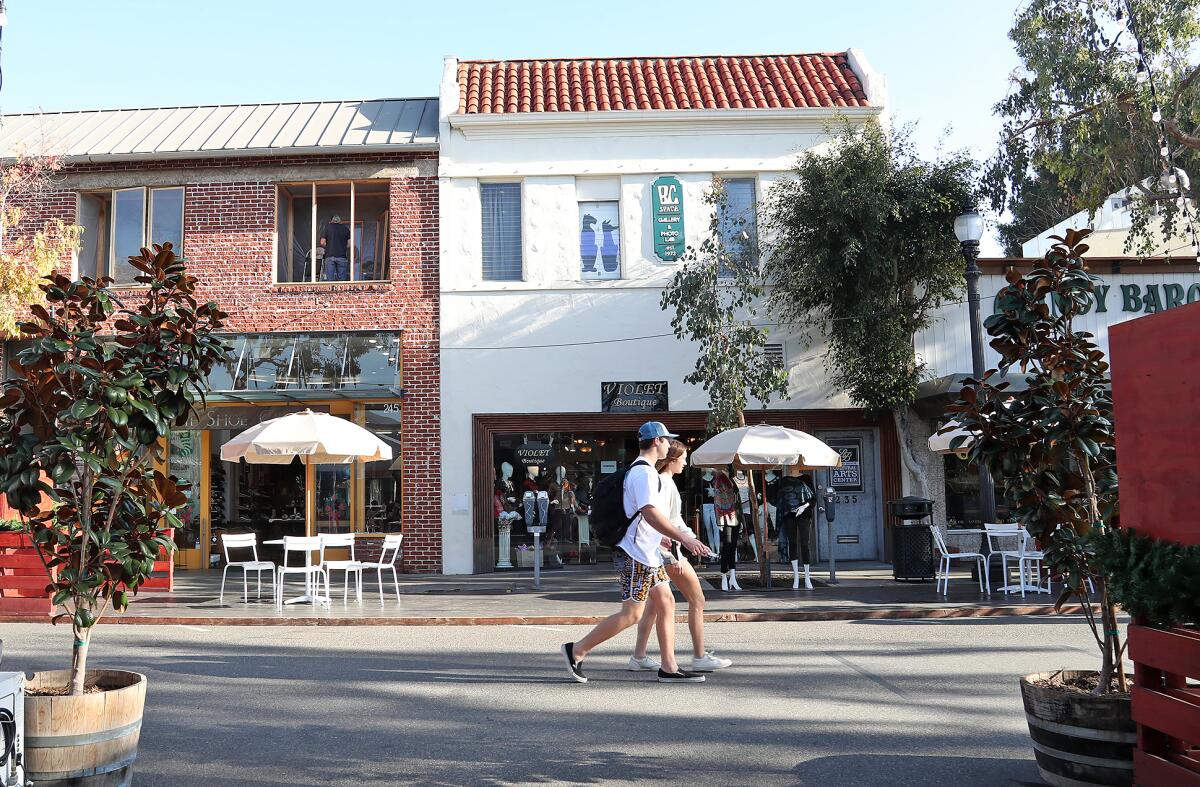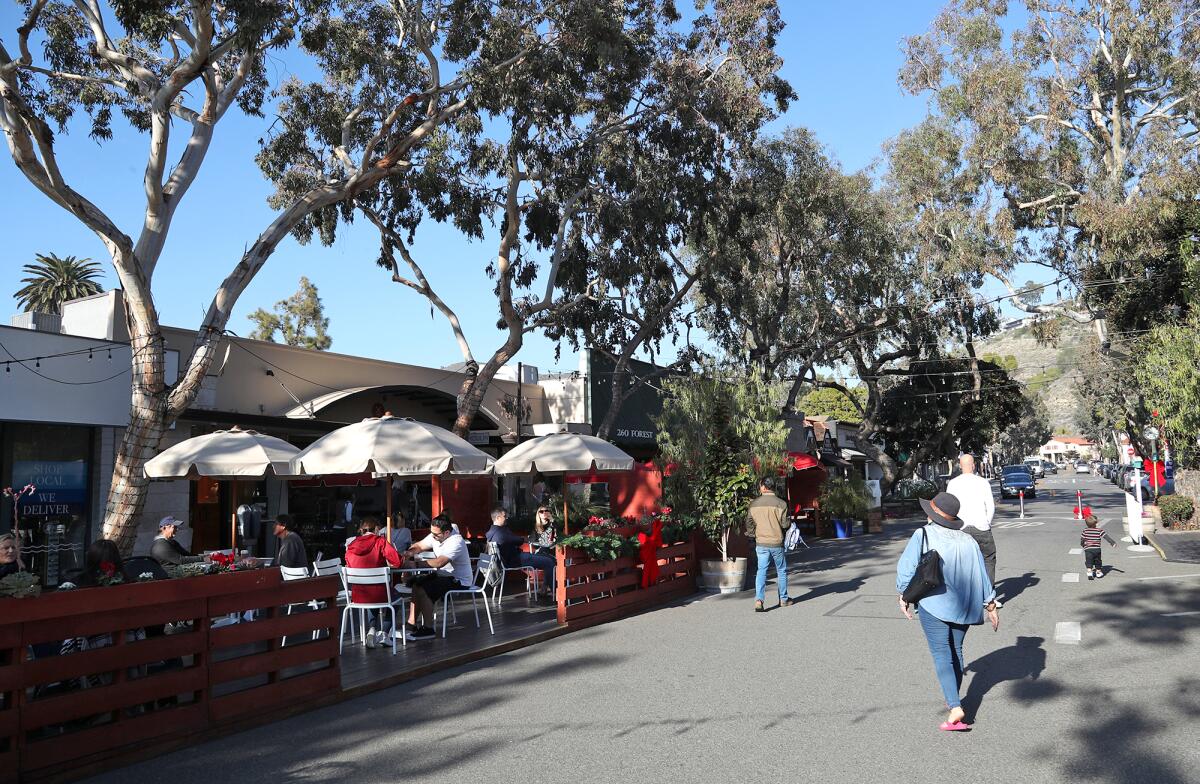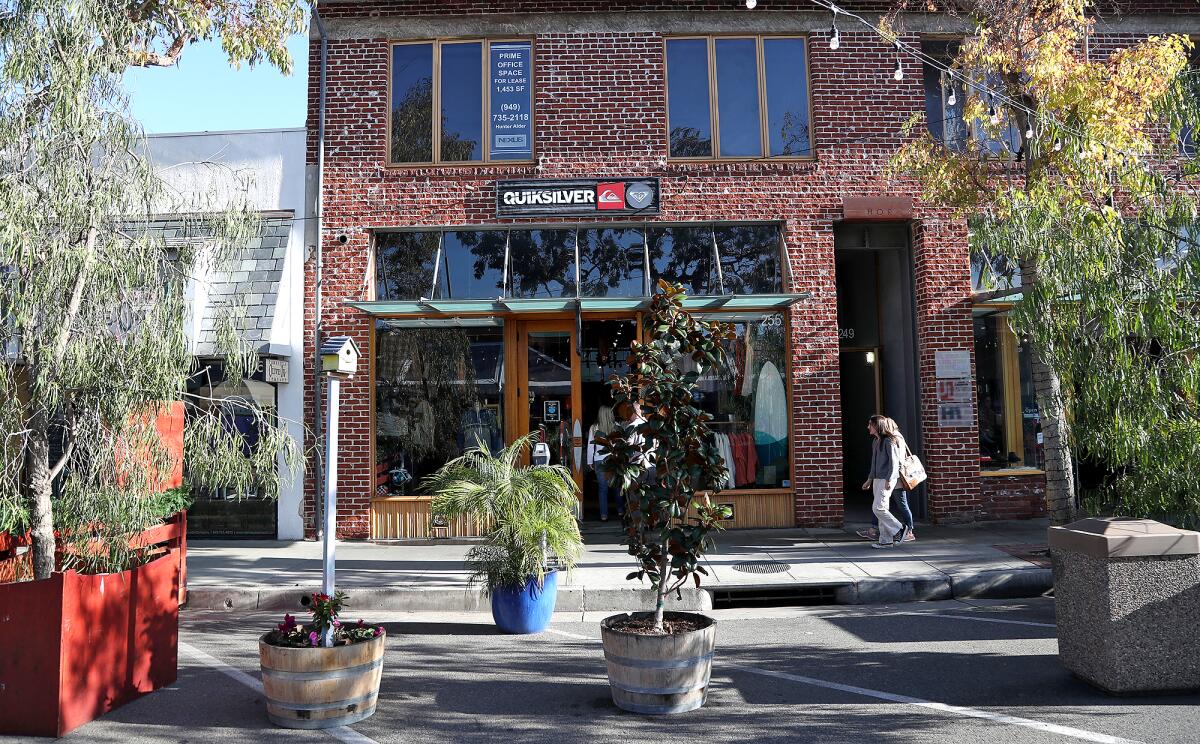Coastal Commission approves Laguna’s downtown specific plan after years in development

- Share via
After years of planning and workshopping, an updated plan that will guide the growth, design and development standards of downtown Laguna Beach was approved by the state Coastal Commission in mid-December.
The Laguna Beach Downtown Specific Plan was initially adopted in 1989 and has since been amended nine times, with its last comprehensive update in 2000 and its last amendment in 2018. The 2000 amendment expanded the boundaries of the document to the Boys & Girls Club on Laguna Canyon Road and created the Civic Art District.
Work for the latest comprehensive update began in 2012 and the City Council adopted the update in July 2020, but couldn’t implement it until it received approval from the Coastal Commission.
Residents have heatedly debated the pros and cons of certain changes for years, with many worried about the relaxing of parking requirements and fearful of changing the city’s “village-like” characteristics.
City spokeswoman Cassie Walder confirmed Wednesday the plan will not go into effect until the Laguna Beach City Council adopts the modifications approved by the commission.
That first reading by council is scheduled for Jan. 25.
The changes principally relax regulations surrounding new businesses in the downtown area.
Businesses will be required to have three parking spaces for every 1,000 square feet of gross floor area for certain non-residential uses.
Additionally, most uses in the area are now to be permit-by-right as opposed to conditional use permits, in order to streamline and reduce barriers to establishing new businesses in the downtown.
Conditional use permits will only be required of businesses that could potentially create impacts on their surrounding neighborhoods, such as bars, restaurants, live entertainment venues and souvenir shops.
Other changes include the reuse of public parking in the downtown area and changes to the design guideline criteria for new projects.
What has not changed are any provisions that would allow nonconforming structures to be replaced or reconstructed to their original heights or specifically allow or promote second-story additions to historic buildings. It also doesn’t affect the city’s historic preservation program — also updated in 2020 — and retains a list of properties that are on the city’s historic register and those eligible for the national and state indexes.
“Like everything in the COVID world, the Coastal Commission was backed up so it took us until [December] to get on the agenda with the Coastal Commission and we had a very good outcome [with] Coastal Commission ... because we had a very thorough public vetting process on the downtown specific plan,” Mayor Sue Kempf said during a recent episode of the city’s podcast.

“We worked on it in true Laguna fashion for eight years. We had over 20 Planning Commission meetings. I served on the Planning Commission for five years and during that time, I probably heard the Downtown Specific Plan amendments — I don’t know — five or six times?” said Kempf, who added that a commissioner acknowledged the degree of public input that the city garnered.
Kempf said the updates to the plan principally deal with the outgoing, but stringent parking requirements, where property owners were required to provide one space for every 250 square feet of gross floor area for general retail and one space for every 100 square feet of gross floor area for food service usage, and permitting.
“The opportunity to do business in Laguna is tied to parking, which really makes us noncompetitive with other cities when there’s a business that might be attractive for residents and for ... visitors as well,” said Kempf. “That is really going to help us.”
“I don’t expect it to be a big change, but in terms of attracting better businesses and businesses that are popular these days as we see a transition from retail to other uses. It’ll help us in the long-run, I think,” she said.

All the latest on Orange County from Orange County.
Get our free TimesOC newsletter.
You may occasionally receive promotional content from the Daily Pilot.







